Here’s a picture whose myriad details I’ve wanted to scrutinise for many years. Lieven Cruyl was the draughtsman and Coenraet Decker the etcher while the picture itself appears as an illustration in Athanasius Kircher’s (deep breath) Turris Babel, Sive Archontologia Qua Primo Priscorum post diluvium hominum vita, mores rerumque gestarum magnitudo, Secundo Turris fabrica civitatumque exstructio, confusio linguarum, & inde gentium transmigrationis, cum principalium inde enatorum idiomatum historia, multiplici eruditione describuntur & explicantur. The book was published in 1679 and, among other speculations, features Kircher’s eye-popping illustration (below) showing how tall the Tower of Babel would have to be in order to reach the Moon. I used part of the big illustration in a cover design for metal band Melechesh in 2006.
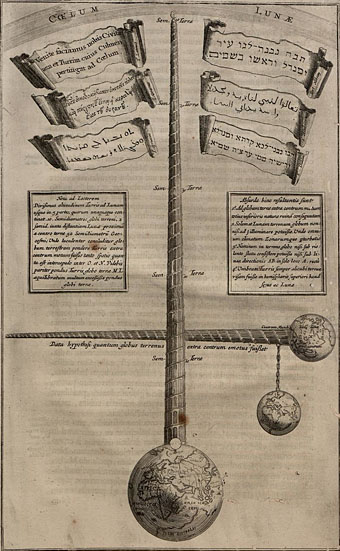
The copies here are from a scanned volume at the University of Heidelberg where the pages have suffered slightly from bookworm. But the resolution is high enough to explore a picture crawling with tiny details, from the bristling scaffolding at the top of the structure, and the houses (for the workers?) built on the ramps lower down, to a procession of camels and other beasts being led towards the main entrance. In the background there are smaller towers and a few pyramids (Kircher explored the latter elsewhere in the book), and also a harbour with beast-headed sailing ships. The full-size picture may be explored here.
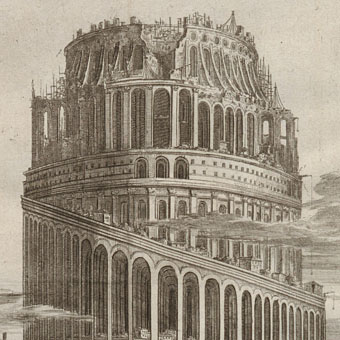
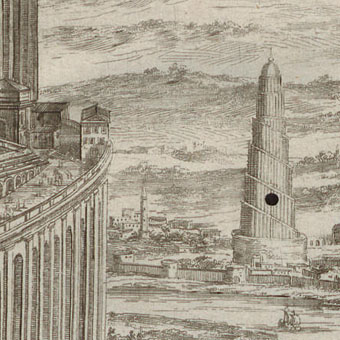
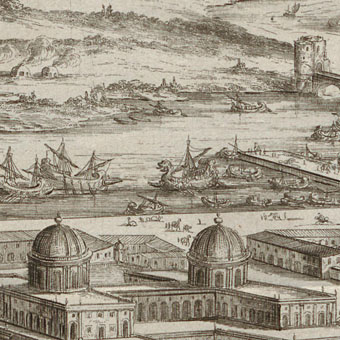
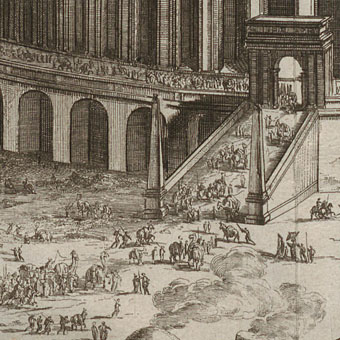
Elsewhere on { feuilleton }
• The etching and engraving art archive
Previously on { feuilleton }
• La Tour by Schuiten & Peeters

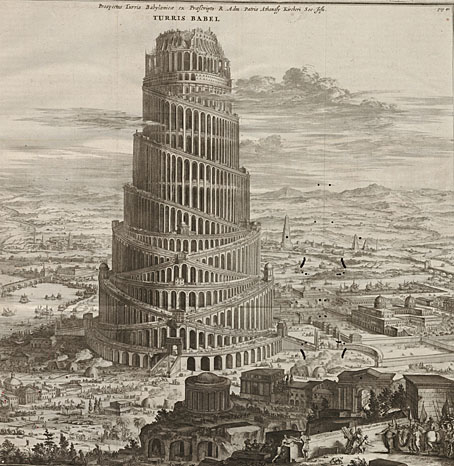
Cooool. Man, that image is so immersive — looking at the detail shots here and scrolling around the full thing at the Heidelberg site, I can’t help imagining a shared world anthology. Writers each building a story around one little area as setting, I mean — that bridge and harbour at the right, the palace just down from it, those houses midway up the tower on the road that runs horizontally across.
I say “shared world,” but I wouldn’t even try for consistency between stories. Hey, it’s *Babel*.
It’s great, isn’t it? The kind of minute detail which, as you say, implies little narratives once you start to discern the various details. The Schuiten and Peeters story I linked to above is one attempt to tell a story set inside such a structure, although the S&P structure must be at least a mile high, and broad enough to be a vertical city rather than a mere building.
I’m currently researching ancient Mesopotamia for a novel, and I’m always struck by the discrepancies between the actual architecture of that place in those times, and the way western artists imagined it to be.
With an image like this you don’t even need text to go with it. It’s a Weird Tale in itself.
Ted Chiang’s Tower of Babylon is a pretty excellent take on the structure as well.